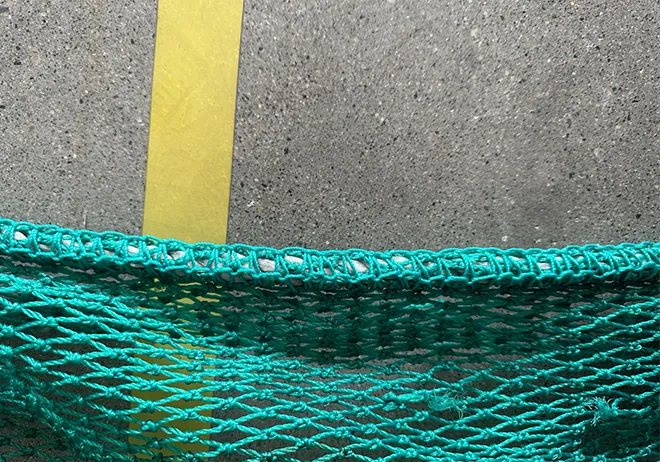woven bag cutting and sewing machine
Woven Bag Cutting and Sewing Machines Revolutionizing the Packaging Industry
In recent years, the demand for eco-friendly packaging solutions has surged globally, leading to an increased focus on woven bags. These bags are not only durable and reusable but also offer a sustainable alternative to single-use plastic bags. The production of woven bags entails several essential processes, notably cutting and sewing, which are facilitated by advanced machinery designed specifically for these tasks. This article delves into the intricacies of woven bag cutting and sewing machines and their significance in the packaging industry.
Understanding Woven Bags
Woven bags are commonly made from polypropylene or similar materials, which are known for their strength and flexibility. These bags are widely used in various sectors, including agriculture, retail, and construction, for packaging products ranging from grains to hardware items. The woven design allows for a lightweight yet robust product, which can hold substantial weight without tearing. The versatility of woven bags has made them increasingly popular, prompting manufacturers to seek efficient production methods.
The Role of Cutting Machines
Cutting machines are integral to the production of woven bags. These machines are designed to cut large rolls of fabric into predefined patterns and sizes according to the requirements of the final product. There are several types of cutting machines available, including manual, semi-automated, and fully automated systems.
Automated cutting machines leverage advanced technology such as digital imaging and CAD software to enhance precision and reduce waste. These systems can quickly transition between different bag designs, accommodating the varying needs of customers. The capability to cut multiple layers of fabric simultaneously increases productivity and efficiency, ensuring that manufacturers can meet market demand without compromising quality. Furthermore, some cutting machines come equipped with additional features like laser cutting, which ensures clean edges and a polished look for the final product.
The Importance of Sewing Machines
woven bag cutting and sewing machine

Once the bags have been cut, the next critical phase is sewing. Sewing machines crafted for woven bags are specifically designed to handle the thicker materials associated with these products. These machines ensure that seams are strong and durable, capable of withstanding the stress of carrying goods.
Just as with cutting machines, sewing machines for woven bags come in various configurations, from manual to fully automated systems. Modern automatic sewing machines can stitch multiple layers simultaneously and adjust stitch patterns automatically based on fabric thickness. This versatility not only streamlines production but also enhances the overall aesthetic quality of the bags.
Moreover, some sewing machines offer features such as bar-tack stitching, which reinforces stress points on bags and significantly improves their durability. The integration of computer technology in sewing machines allows for precise control over stitching patterns and speeds, further elevating the production quality.
The Future of Woven Bag Production
As environmental consciousness continues to grow, the market for woven bags is expected to expand, prompting manufacturers to invest in more advanced cutting and sewing machines. Innovation in this field will not only involve the machinery itself but also the materials used. Biodegradable and recycled fabrics are emerging as promising alternatives to traditional polypropylene, and machinery that can accommodate these materials will be essential.
In addition, the incorporation of automation and artificial intelligence in woven bag production will significantly enhance efficiency. With smart manufacturing solutions, manufacturers can optimize workflow, reduce labor costs, and maintain high-quality standards.
Conclusion
Woven bag cutting and sewing machines play a pivotal role in the packaging industry, enabling manufacturers to produce durable and eco-friendly products efficiently. As consumer preferences shift towards sustainability, the evolution of this machinery will continue to drive innovations in bag production. By investing in advanced cutting and sewing technologies, manufacturers not only meet market demands but also contribute to a greener future, aligning with global sustainability goals. The ongoing development in this field will undoubtedly foster new opportunities and challenges, shaping the future of packaging.
-
Industrial Cylinder Arm Sewing Machine: Revolutionizing Heavy-Duty SewingNewsJul.28,2025
-
Cylinder Arm Sewing Machine: Perfect for Special Sewing ApplicationsNewsJul.28,2025
-
Cylinder Bed Sewing Machine: Essential for Sewing Complex MaterialsNewsJul.28,2025
-
Heavy Duty Sewing Machine: The Essential Tool for Industrial ApplicationsNewsJul.28,2025
-
Computerized Pattern Sewing Machine: Revolutionizing Precision StitchingNewsJul.28,2025
-
Heavy Duty Industrial Sewing Machine: Power Meets PrecisionNewsJul.28,2025
-
Leather Sewing Machine: The Industrial Standard for Tough MaterialsNewsJul.18,2025





























